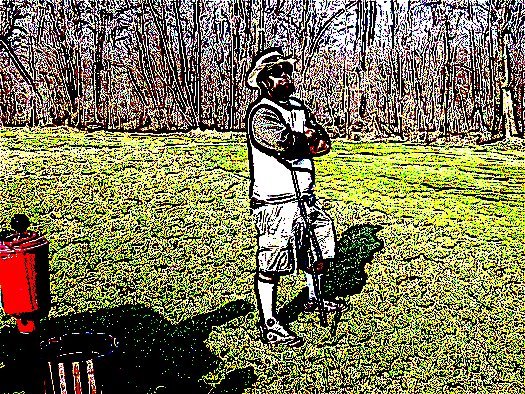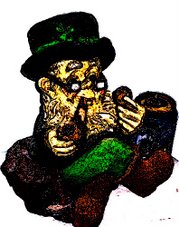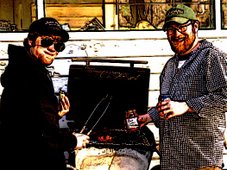
Jorge Posada is ending his 17 year playing career officially today. So naturally once someone that had a pretty good career retires the debate almost instantly begins. Is Jorge Posada a Hall of Famer?
Before I go into telling you if I think he is or not a Hall of Famer here is a list of his numbers compared to some of the best catchers to ever play the game and are in the Hall of Fame.
Jorge Posada was born in Santurce, Puerto Rico in 1971, he played all 17 years of his career with the New York Yankees. He was a switch hitter that was a five time All-Star, five time Silver Slugger and won four World Series championships. Posada is the only MLB catcher in the history of the game to record a .330 batting average or better, 40 doubles, 20 home runs, and 90 rbi's in a single season. Throughout the 2000's he had lead the leagues catchers in several categories.
Here are his career numbers:
Average= .273
HR=275
RBI=1065
OBP=.374
SLG=.474
Hits=1664
Runs=900
Fld%=.992
Here are the numbers of arguably the top 10 catchers in the HOF:
Ernie Lombardi- Ernie was the National League’s Most Valuable Player in 1938 with the Cincinnati Reds. He led the league in batting with a .342 average.
He led the league in batting again in 1942 while with the Boston Braves, batting .330.
In 10 of his 17 seasons Lombardi batted over .300, finishing with the second best career average on this list at .306.
He was inducted into the Hall of Fame by the Veterans Committee in 1986.
Here are his career statistics:
AVG. = .306
HR = 190
RBI = 990
OBP = .358
SLG = .460
HITS = 1792
RUNS = 601
FLD % = .979
Gary Carter- Gary had the best fielding percentage of the players on this list at .991.
He hit over 20 HR nine times and led the league in RBI in 1984 with 106.
He was runner-up in voting for the National League Most Valuable Player in 1980, when he batted .264 with 29 HR and 101 RBI.
His 324 career HR puts him fourth on our list in that category.
Gary was inducted into the Hall of Fame in 2003.
Here are his career statistics:
AVG. = .262
HR = 324
RBI = 1225
OBP = .335
SLG = .439
HITS = 2092
RUNS = 1025
FLD % = .991
Roy Campanella- Roy was a three-time MVP winner in the National League with the Brooklyn Dodgers.
Campanella’s best season was 1953, when he batted .312 while hitting 41 HR, knocking in 142, and scoring 103.
He hit over 20 HR seven times in his abbreviated 10-year career. He batted over .300 three times and knocked in 100 or more runs three times.
His career was cut short in 1958 when he was paralyzed in an automobile accident.
He was inducted into the Hall of Fame in 1969.
Here are his career statistics:
AVG. = .276
HR = 242
RBI = 856
OBP = .360
SLG = .500
HITS = 1161
RUNS = 627
FLD % = .988
Buck Ewing- Buck batted over .300 in 11 of his 17 seasons, nine consecutively.
He led the league in home runs in 1883 with 10. His 200 hits per 162-game season ranks first on this list.
Revered by many to be the best player of the 19th century, his OPS+ was above 150 three times. Ironically, touted to have an excellent throwing arm, he is at the bottom of the list in fielding percentage.
Ewing was inducted into the Hall of Fame by the Veterans Committee in 1939.
Here are his career statistics:
AVG. = .303
HR = 71
RBI = 883
OBP = .351
SLG = .456
HITS = 1625
RUNS = 1129
FLD % = .931
Carlton Fisk- Carlton was the Rookie of the Year in the American League in 1969, batting .293 with 22 HR and 61 RBI.
Oddly enough, in his 24-year career, Fish never led the league in any category at all.
He was on 11 All-Star teams, won one Gold Glove Award, and garnered three Silver Slugger Awards.
Fisk hit over 20 HR eight times and knocked in over 100 twice.
He was inducted into the Hall of Fame in 2000.
Here are his career statistics:
AVG. = .269
HR = 376
RBI = 1330
OBP = .341
SLG = .457
HITS = 2356
RUNS = 1276
FLD % = .988
Gabby Hartnett- In 1935 Hartnett was the National League’s Most Valuable Player, hitting .344 with 13 HR and 91 RBI. His best year was in 1930 when he put up uncharacteristic numbers—he batted .339, hit 37 HR, and drove in 122.
He batted .300 or better six times and was named to six All-Star teams.
Hartnett was inducted into the Hall of Fame in 1955.
Here are his career statistics:
AVG. = .297
HR = 236
RBI = 1179
OBP = .370
SLG = .489
HITS = 1912
RUNS = 867
FLD % = .984
Mickey Cochrane- Cochrane won two Most Valuable Player Awards in the American League. In 1928 he won it by hitting .293 with 10 HR and 57 RBI while with the Philadelphia Athletics.
He won it again in 1934 with the Detroit Tigers, batting .320 with two HR and 76 RBI.
Mickey’s .320 career average is good enough to lead the list of Hall of Fame catchers.
In 1933 he led the league in OBP with .459.
He was inducted into the Hall of Fame in 1947.
Here are his career statistics:
AVG. = .320
HR = 119
RBI = 832
OBP = .419
SLG = .478
HITS = 1652
RUNS = 1041
FLD % = .985
Johnny Bench- He won the Most Valuable Player Award in the National League twice. In 1970 he won it, batting .293 with 45 HR and 148 RBI. He won it again in 1972, hitting .270 with 40 HR and 125 RBI.
Johnny hit over 20 HR 11 times and knocked in over 100 runs six times.
He was a 14 time All-Star and won 10 Gold Glove awards.
He was inducted into the Hall of Fame in 1989.
Here are his career statistics:
AVG. = .267
HR = 389
RBI = 1376
OBP = .342
SLG = .476
HITS = 2048
RUNS = 1091
FLD % = .990
Bill Dickey- Despite batting over .300 11 times in his 17-year career and averaging 109 RBI, Bill never won a Most Valuable Player award.
His best year was 1937, when he batted .322 with 29 HR and 133 RBI.
His 162-game averages from the years 1936-39 were .326, 32 HR, 145 RBI, 195 hits, and 116 runs scored.
He was named to 11 All-Star teams and was inducted into the Hall of Fame in 1954.
Here are his career statistics:
AVG. = .313
HR = 202
RBI = 1209
OBP = .382
SLG = .486
HITS = 1969
RUNS = 930
FLD % = .988
Yogi Berra- Berra started his illustrious career with the New York Yankees in 1946.
He was the Most Valuable Player in the American League three times. The first came in 1951 when he batted .294 with 27 HR and 88 RBI.
His next MVP Award came in the 1954 season. That year he hit .307 with 22 HR and 125 RBI.
He won it again the very next year by batting .272 with 27 HR and 108 RBI.
He was runner-up in voting twice and finished third one other time.
In a four-year stretch from 1953-56, Yogi’s 162-game averages were .293 with 30 HR and 126 RBI.
Berra was named to 18 All-Star teams and played in 14 World Series. He is the only man in history to win 10 World Series rings.
Yogi was inducted into the Hall of Fame in 1972.
Here are his career statistics:
AVG. = .285
HR = 358
RBI = 1430
OBP = .382
SLG = .486
HITS = 2150
RUNS = 1175
FLD % = .989
You can compare Posada's stats with some of the best catchers to ever play the game and see that they are impressive but in my opinion not good enough to be a Hall of Famer. Currently there are 16 catchers in the hall of fame. If I had to rank Posada I would say he would be around a top 25 catcher of all time.
The way I see it is with Jorge retiring and Mariano Rivera and Derek Jeter probably not too far behind, he will then have to compete with them on the Hall of Fame ballet. How can anyone vote to let in Posada over those two greats, not to mention anyone else that will be on the ballot. He will still be on the ballot years after those guys get in but I still believe he is just not quite a Hall of Famer.
With me saying he is not a Hall of Famer takes nothing away from him being a great player. He is a good player that had great success in the game of baseball. He was a good player on some outstanding teams. In the era that he played he was one of the best catchers in every statistical category. Which is a good fete especially with several players being accused of using PED's. Something he has never been accused of.
Regardless of if he makes the Hall of Fame or not congratulations on a great career Jorge.
If you feel differently on my perspective feel free to leave a comment or email your comment to 30mclear44@gmail.com. I will insert your comment into the post and comment on it as well.


















No comments:
Post a Comment